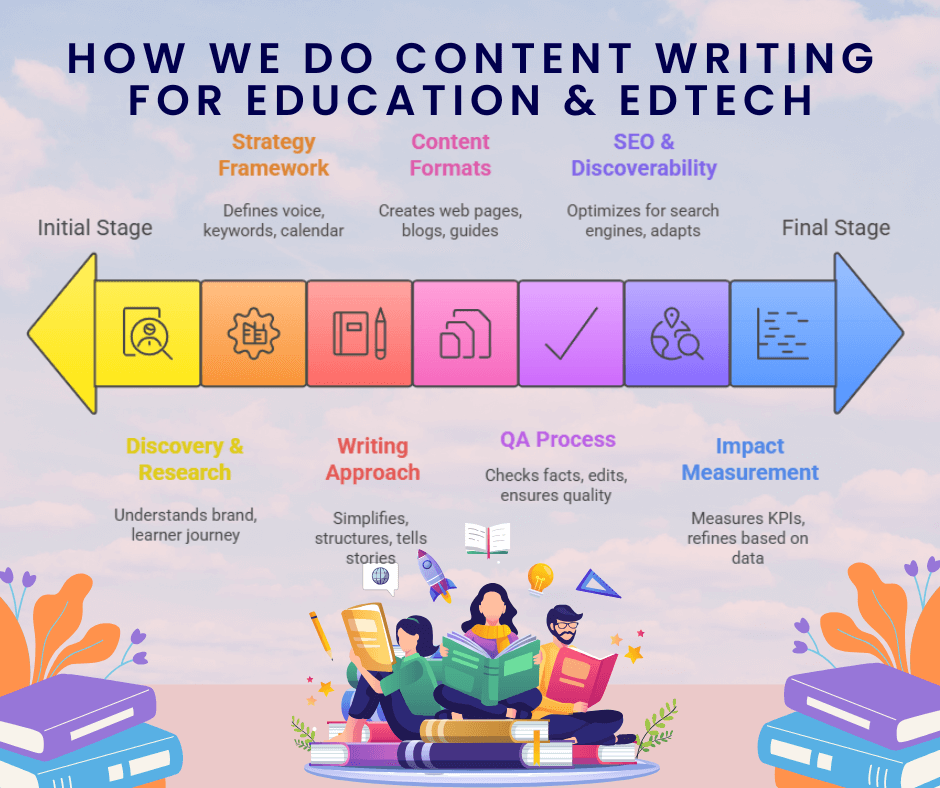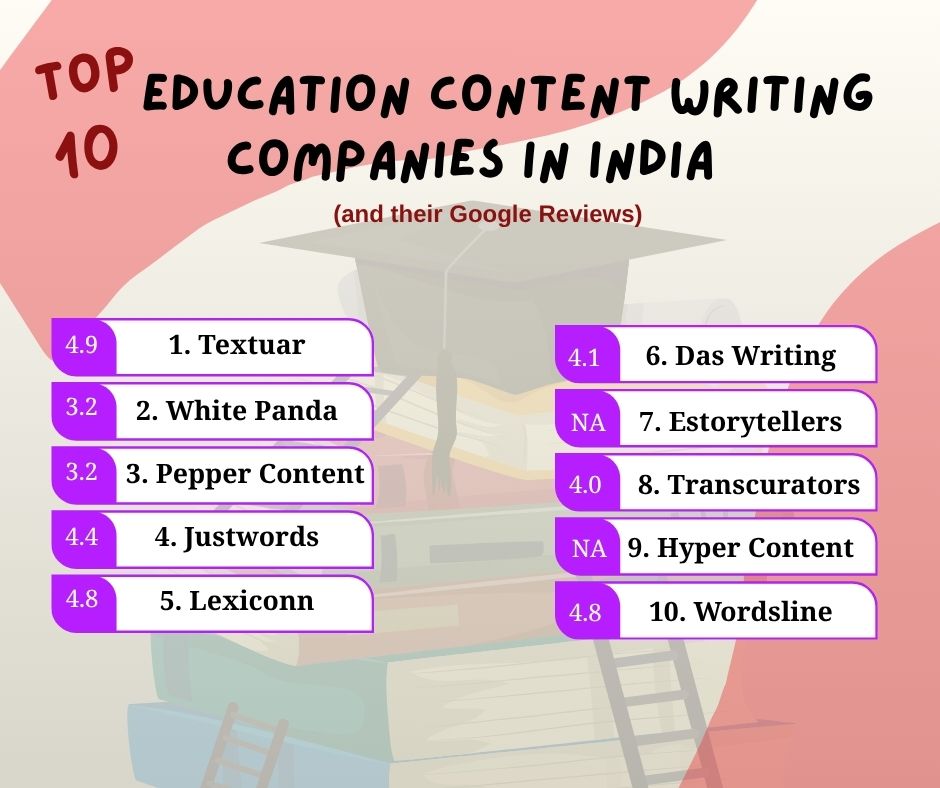📌 TL;DR Summary- What is Covered?
Content Marketing for Financial Services in 2026 (How to Get It Right)
- Lead with trust + compliance: fact-checked, regulation-safe content (SEBI/RBI/FEMA, disclaimers).
- Make content educational, not salesy: explain loans, investing, taxes, risk, and myths in simple language.
- Put customers at the centre: answer real FAQs, pain points, and life goals with clear guidance.
- Use multi-format content: blogs, explainer videos, infographics, calculators, webinars, newsletters.
- Balance SEO + accuracy to stay discoverable and credible.
- Tell stories & case studies to humanize money and show real outcomes.
- Track results with leads, engagement, and trust signals, then refine.
It takes special skill to develop engaging and quality content at scale to promote your fintech and financial services brand. You need a strong company like Textuar by your side if you want your content marketing strategy to succeed in 2026 and beyond.
Businesses in the sensitive and highly regulated finance and fintech industries need to establish trust and educate the customer. This is the preferred way to gain a competitive upper hand. It is here that content marketing for financial services emerge as a viable success enabler.
Learn more about the various aspects of content marketing for financial services in this guide. You will find advantages, important tactics, and ideal content kinds in detail here. Also, get information on success metrics to keep your marketing tactics giving fruitful results. Implementing a well-structured content plan can enhance the status of financial businesses and improve customer engagement.
Read the blog to learn how to generate high-quality leads in a financial digital world through content marketing.
What is Finance Content Marketing?
Content marketing for financial services refers to writing informative finance content to win brand and client trust. The content’s goal is to give helpful and informational messages. As a result, readers can avoid compliance issues and make better decisions.
Financial services, being different from other companies, require a specified strategy for balancing engagement with regulatory compliance. It is a fact that people look for clear-cut and reliable financial information. Therefore, businesses need to offer quality content that educates and attains credibility.
A good content marketing strategy enables financial institutions to reach their target audience. They simplify complex financial issues and guide potential clients through the decision-making process.
Blogs, financial product pages, infographics, and newsletters are a few examples of useful content that builds stronger bonds and boosts a company’s credibility.
How is Content Marketing for Financial Services Different?
Financial content marketing is different from other industries because of-
-the complexity of financial topics,
-strict regulatory requirements,
-avoid promoting a specific financial product, and
-the need for absolute accuracy.
While retail or technology may use persuasive or trend-driven content, it is different with financial institutions. They must focus on transparency and teaching to gain consumer confidence. Misleading or overly promotional content can harm credibility and even lead to legal issues.
Why Trust is Important in Finance Content Marketing?
Trust and authority are the most important elements of financial content marketing. Customers look for information that is dependable and simplifies complex financial concepts and yet adheres to the regulatory framework of the industry. Compliance with such standards provides credibility, and well-researched content creates knowledge.
Thus, a balance between engagement and compliance would make financial institutions more powerful brands, creating long-term relationships with customers.
This is where an expert like Textuar delivers long-term value with content marketing for financial services.

What are the Benefits of Content Marketing for Financial Services?
Companies use different types of marketing to attract customer attention. But content marketing for financial services remains a potent tool to achieve robust growth affordably.
It will be one of the effective tools for developing trust and education of the customer. The content is presented with strong regulation and relevancy for better understanding. These are the primary benefits of executing a good content strategy:
1. Builds Trust and Credibility
A sense of trust is vital for financial decision-making, and that can be created by providing proper, compliant, and transparent content. Clear, fact-based information can reassure customers about the business, making it sound like a credible industry expert.
2. Educates Customers About Financial Products
Most financial subjects like investing, loans, and retirement planning are intricate and overwhelming. Well-crafted content makes them more understandable to customers and helps them make the right decision. Educational blogs, detailed videos, and interactive tools build financial literacy among consumers.
3. Increases Brand Awareness for the Company
A solid content strategy brings a business to the forefront, allowing it to be seen by a larger audience. This way, financial businesses can increase their market influence. For this, they post high-quality content on various platforms, such as websites, social media, and industry magazines.
4. Content Marketing for Financial Services Connects with Customers
Interactivity and informative content establish two-way communications. This clear connectivity leads to businesses interacting with customers. Blogs, newsletters, and social media posts reignite conversations. It erases ambiguity through a direct question-and-answer process. Plus, it facilitates relationships leading to being valued customers.
5. Lead Generation Made Impactful
Quality content can help companies build potential clientele. It will cover their concerns and guide them through the decision-making process. It can even capture leads and push them toward conversion, driving business growth.
Through the effective use of content marketing, a financial service provider would gain credibility, educate those audiences, and create high-value leads that are compliant with industry regulations.
How to Write Content for Financial Services?
Effective contenting marketing boosts engagement for financial services. It also builds trust and enhances conversion. But how to achieve that? Here are the steps you can take:
Step 1. Customers Need to be at the Centre of the Strategy
Any effective financial content strategy starts with knowing the demands, issues, and budgetary concerns of your audience. You need to research frequently asked questions to create content that offers genuine value or solutions. Also, through the content, try to clear common financial myths and clients’ pain points.
Step 2. Pick the Relevant Content Types
Different types of customers prefer consuming different formats of content. You need to understand what kind of content type your target audience prefers. These are some popular formats:
Step 3. Leverage Storytelling and Case Studies
Financial topics become simple to grasp with storytelling and case studies of real people. This would make a customer connect to his or her investment journey or even make a debt management story relatable. Hence, try to create those emotional connections that encourage trust in clients.
Step 4. Search Engine Optimization and Compliance
Balancing SEO and regulatory compliance is important when financial products are marketed through content. Strategic keywords should be used in the information generated to enable accessibility.
The information should also maintain accuracy and compliance with financial requirements. Both SEO performance and compliance are improved through the use of simple language and the citing of reliable sources.
Businesses can create reliable and successful content that appeals to the target audience with the above strategies. All you need to focus on is maintaining compliance and boosting online visibility for better client engagement.
What Are the Ideal Types of Financial Services Content?
The production of good and varied content continues to be the best aspect of content marketing for financial services. The following content categories are the most effective in educating, entertaining, and fostering audience trust:
1. Instructional Blog Articles and Manuals
Even while financial subjects aren’t particularly difficult, they are made simpler by a well-organized blog or detailed guide. Information on investment strategy, tax-saving tips, or loan comparisons will add value to future customers. It will drive your brand as an industry expert.
2. Infographics and Videos
Visual content is very effective in explaining complicated financial data. Infographics break down statistics, trends, and concepts into digestible formats. Also, videos can feature financial tips and expert interviews. These formats improve engagement and retention.
3. Podcasts and Webinars
Webinars would offer listeners the convenience of learning financial knowledge on the move. It will be quite an intellectual experience for people. Podcasts about professional interviews in finance sectors or attending financial planning workshops may yield more reliable and fresh leads.
4. Success Stories and Case Studies
Present content on real-life success stories since they lend credibility and explain how your services have rewarded others. Case studies show where investments are yielding results, such as a person who has successfully financed firms or gotten out of debt.
5. Newsletters and Social Media
Update the newsletters and your social media pages frequently with updates, financial advice, and market news. To create enduring relations with clients, involve the readers in Q&A sessions, and share industry insights.
Financial businesses may increase the reach, engagement, and reliability of their content by implementing the previously listed content formats.
Here is a quick look at the various formats:
| Content Type | Purpose | Examples |
| Blog Posts | Educate clients on trends, investments, and financial literacy. | *”5 Smart Tax-Saving Strategies for 2026″*, “How to Build an Emergency Fund” |
| Whitepapers | Provide in-depth analysis on complex financial topics. | “The Future of Digital Banking: 2026 Trends”, “Cryptocurrency Regulations Explained” |
| Infographics | Simplify data-heavy concepts visually. | “How Compound Interest Grows Over Time”, “Steps to Secure Your Retirement” |
| Case Studies | Show real-world success stories of clients. | “How Client X Saved $50K with Our Wealth Plan”, “A Startup’s Journey to Financial Stability” |
| Videos | Engage audiences with dynamic explanations and expert insights. | “Bitcoin for Beginners (Explainer Video)”, “Interview with a Financial Advisor” |
| Newsletters | Share curated updates, tips, and company news. | “Monthly Market Digest”, “Exclusive Investor Insights” |
| Webinars | Host live Q&A sessions or educational workshops. | “Retirement Planning in a Volatile Market”, “AI’s Impact on Personal Finance” |
| Social Media Posts | Boost engagement with bite-sized, shareable content. | “Quick Tip: Reduce Credit Card Debt”, Poll: “What’s Your Biggest Financial Worry?” |
| E-books | Offer comprehensive guides for lead generation. | “The Ultimate Guide to Early Retirement”, “Investing 101 for Millennials” |
| Checklists | Provide actionable, step-by-step tools. | “Pre-Tax Season Checklist”, “10 Steps to Improve Your Credit Score” |
| Interactive Tools | Engage users with personalized calculations. | “Mortgage Calculator”, “Retirement Savings Estimator” |
| Press Releases | Announce company news, partnerships, or regulatory updates. | “[Company] Launches AI-Powered Investment Platform” |
How to Choose the Right Content Marketing Company for Financial Services?

It takes special skill to develop engaging and quality content at scale to promote your fintech and financial services brand. You need a strong company like Textuar by your side if you want your content marketing strategy to succeed in 2026 and beyond.
Here’s how you can pick the ideal company to propel your content marketing efforts ahead of others:
1. Industry Expertise
Financial content requires accuracy and compliance (SEBI/RBI guidelines). Also, the company needs to showcase the ability to simplify complex topics (e.g., mutual funds, insurance, stock markets).
You should ask- “Can you share examples of content you’ve created for banks, NBFCs, or fintech startups?”
2. Compliance and Regulatory Awareness
Misleading claims or non-compliance can lead to legal risks. A good agency understands financial regulations (e.g., disclaimers for investment advice).
You should ask- “How do you ensure content adheres to SEBI/FEMA guidelines?”
3. Multi-Format Content Capabilities
Your audience consumes content differently (blogs, videos, LinkedIn carousels, WhatsApp newsletters).
You should ask- “Can you create a mix of whitepapers, explainer videos, and SEO articles?”
4. Industry Experience
If the content company has prior experience in financial services sector, then it will be a good move to go with them.
You should ask- “Can you share your portfolio of the past work done in this field?”
Conclusion
Content marketing for financial services is one of the most preferred ways of developing customer trust and educating them about the business in 2026. The process of developing high-quality, compliant content that communicates the needs of your target audience has many benefits. It can strengthen the authority of your brand and its relationships with customers.
A great content strategy from a company like Textuar will be a boon. With it, you can differentiate your presence in a competitive financial industry requires compliance, SEO, and user engagement to be in harmony.









